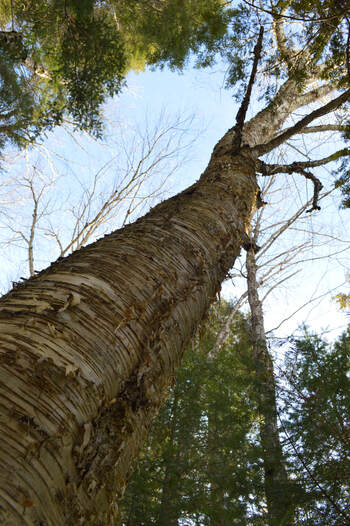|
By: Allison Hands & Bethany Kempster, BEAN Co-Chairs When you hear the word “biodiversity” does your mind conjure images of lush rainforests or tropical coral reefs? What about your own backyard? Would you be surprised to learn that Ontario is home to 30,000 known species of plants and animals? Biodiversity supports the natural systems which we rely on - getting to know what lives in Ontario is the first step to understanding and protecting it. Getting outdoors and exploring biodiversity doesn’t have to be hard! Check out these easy to-do backyard activities  The Value of Being Different: Biodiversity is the variety of life. It’s birds, bugs, plants and microorganisms – all living things! Biodiversity also exists at the genetic, species and ecosystem level. It’s a big concept! You can start your exploration of biodiversity by looking a little bit closer at one of nature’s more stationary (and stately) organisms – trees! Who Grows There: Take a moment and name as many tree species as you can. Were you able to name five, ten, or even twenty? If you want to list all the trees native to Canada, you will need to name over one hundred and forty species! We can start smaller though, let’s get to know a tree in your backyard.
My Favorite Tree: Hopefully, you’ve had a chance to look at a lot of trees. Now it’s time to pick your favorite tree and really get to know it.
Mini-Forest Exploration: There is a world of biodiversity right at your feet! Check it out with a mini-forest exploration in your backyard.
Want to learn more about trees? Visit the Education resources section of our website at and download a copy of our Let’s ID that Tree lesson plan! Categories
2 Comments
Archit Mehta
10/18/2023 12:07:13 am
Thanks for sharing your knowledge! Your blog post was informative and well-researched. I appreciate the effort you put into providing credible sources. To explore this topic further, <a href="https://independentbackyard.com/my-book/#aff=ArchitMehta" target="_blank">click here</a>.
Reply
andrew
1/7/2024 02:23:07 am
Thank you for providing such an informative and well-researched blog post. Your expertise on the subject matter was evident, and I enjoyed learning from your perspective. To explore more, <a href="https://0f4e85udlb46fuvqi6ia0yt01q.hop.clickbank.net" target="_blank">click here</a>.
Reply
Leave a Reply. |
AuthorWrite something about yourself. No need to be fancy, just an overview. Archives
July 2024
Categories |

 RSS Feed
RSS Feed
